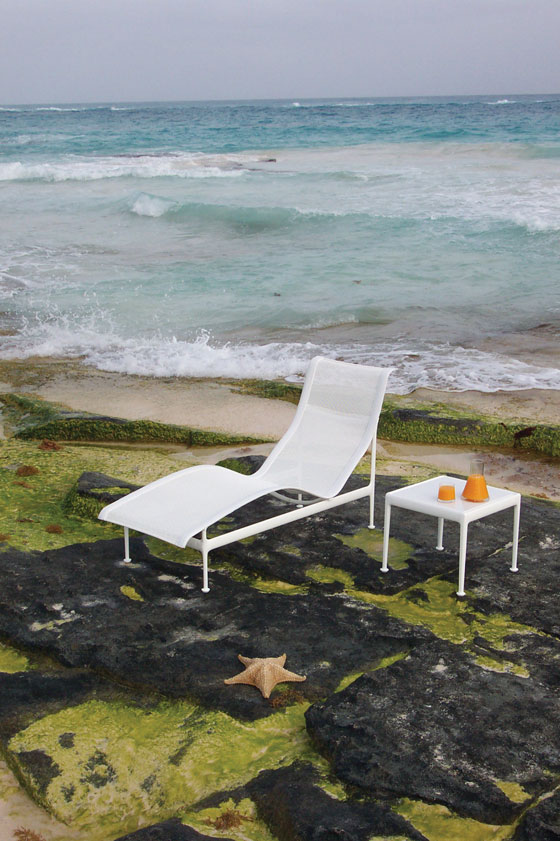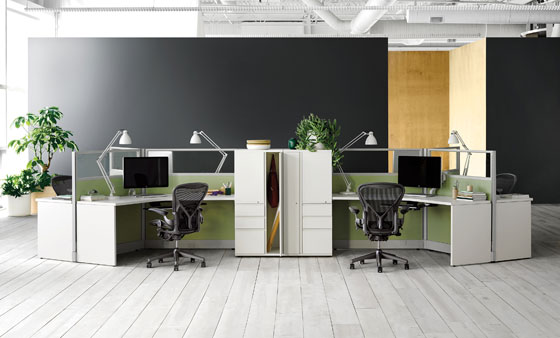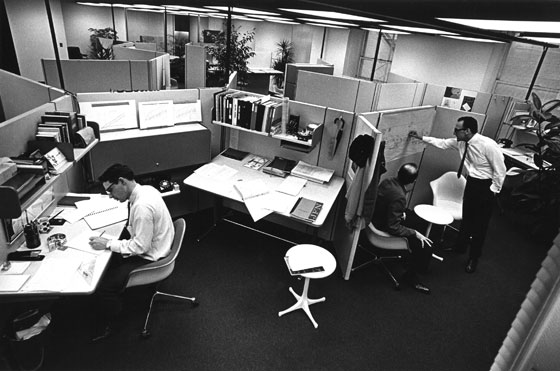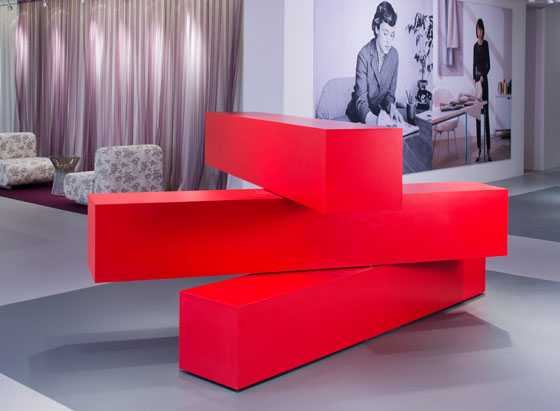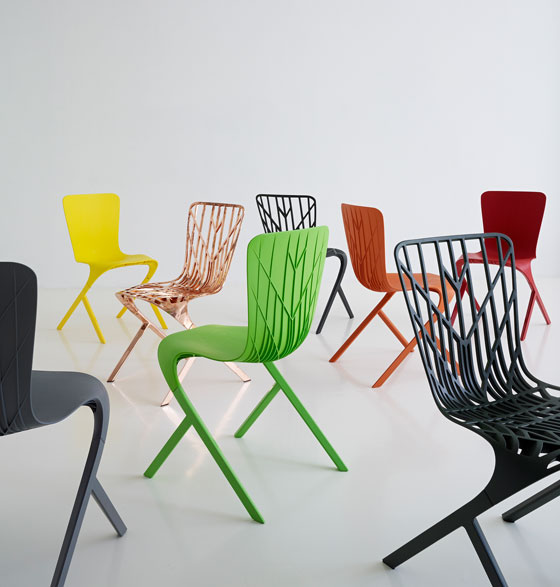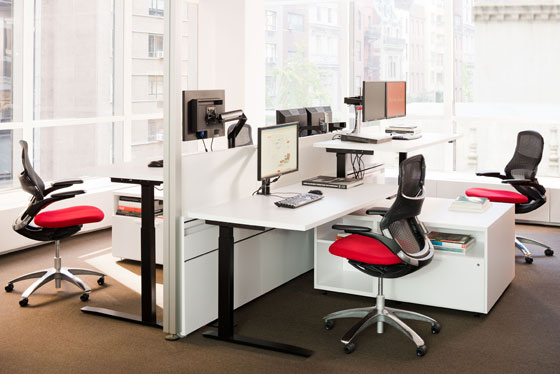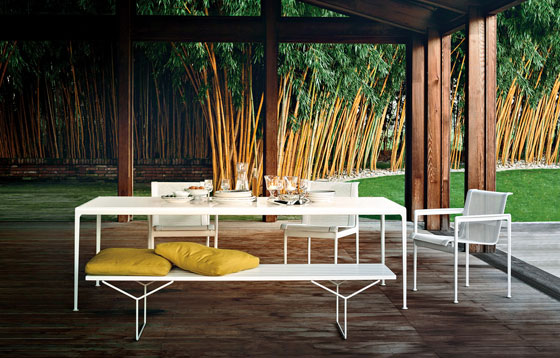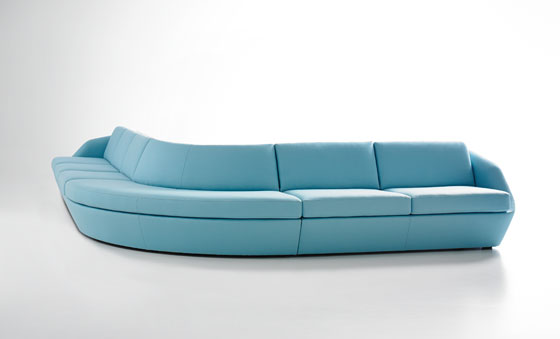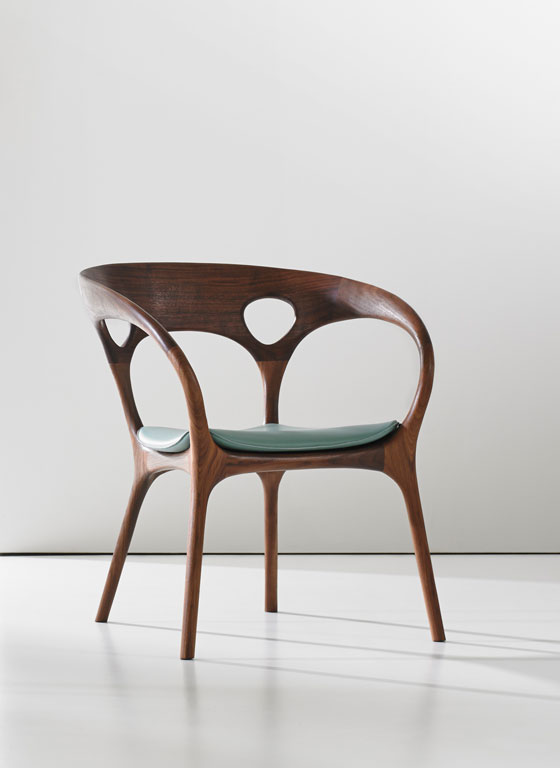American Furniture Icons – Updated Modernity
Text by TLmag
Brussels, Belgium
15.09.15
Design and innovation are intimately linked by their essence, perhaps even more so for major American brands Herman Miller and Knoll, who’s phenomenal post-war development is intrinsically tied to the immediate interpretation of a new American way of life – a social revolution that was accompanied, thanks to in part these two companies, an evolution in daily objects.
Knoll, Outdoor furniture collection by Richard Schultz, ed. 1966, reed. 2012 © Knoll
Herman Miller
Herman Miller’s development is driven by non-obsolescence, the desire to create furniture that fits the time. This vision is evident in recent projects such as Bassam Fellows’ Tuxedo series or Sam Hecht and Kim Colin’s Wireframe Sofa Group. Classics like Charles & Ray Eames’ Shell Chair are now produced in fiberglass to reduce health risks. This approach is even more pronounced in the brand’s reflection on the workspace, now addressed as ‘solutions.’ Introduced in 1968, the Action Office is still in demand. Most recently, Locale, a new system designed by Hecht and Colin, makes it possible to transition between working together and individually, by either sitting or standing. These solutions are integrated with others in the total Living Office – a 2013 framework implemented as an innovative approach to the workspace centred on the human needs, while adapting to each organisation’s activities. This reflection is based on culture, connectivity and motivation, with the key idea of helping each person feel their best as they live, study, work and even receive care in hospitals. Always researching, Herman Miller considers design a way of resolving everyday problems, in order to improve the world we live in.
Herman Miller, Wireframe Sofa Group, design: Sam Hecht & Kim Colin, 2013 © Herman Miller
Herman Miller, Locale office system created by Sam Hecht & Kim Colin, International Design Excellence Award, 2014 © Herman Miller
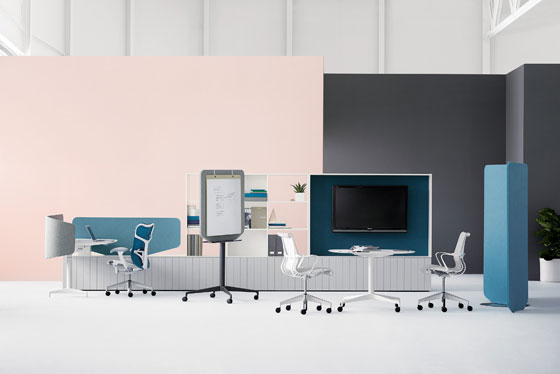
Herman Miller, Locale office system created by Sam Hecht & Kim Colin, International Design Excellence Award, 2014 © Herman Miller
×Herman Miller, Action Office, now 120 degrees © Hermann Miller
Herman Miller, Action Office System, design: Jack Kelley & Robert Probst, 1968 © Herman Miller
Knoll
The other American design ‘heavy hitter’ follows a similar philosophy rooted in the goal of find sustainable answers for changing needs. Launched in 2013, Tools for Life by OMA and Rem Koolhaas adapt to even unconscious functions. Completely experimental, the 11-piece collection forms an interface between furniture and user, conducive to variations of social life and work. Both Herman Miller and Knoll founder Florence Knoll were at the origin of discovering new workspace function. With a competitive sprit, both continue to bring considerable strength to innovation in a period where attitudes change rapidly. Rereleases, such as Richard Schultz 1966 outside collection relaunched in 2012, reveal the return of forefront designs that were so experimental at the time of their inception that they still represent great modernity. The link between the past and present extends towards the future in the brands most recent editions by visionary designers such as Antenna Designs, which in 2010, created an innovative open office system, or David Adjaye, whose Washington collection is one of Knoll’s latest editions.
Knoll, Washington collection, design: David Adjaye © Joshua McHugh
Bernhardt Design
Launched in the 1980s as the contemporary branch of Bernhardt Furniture, Bernhardt Design is not, unlike the two other big players, the originator of pieces that have entered design history. However, Like them, it constantly seeks to marry innovation and sustainability. Driven to create products that stand the test of time rather than recycling, creative director Jerry Helling launched Global Edition in 2008 – a collection of products that are simple, clean, universal and timeless. Designs by Yves Béhar, Christian Biecher and Arik Lévy make this collection equally useful in residential and professional contexts. Celebrating 125 years of Bernhardt Furniture in 2014, the brand chose to associate the values of heritage to those of innovation and sustainability. The result was a collection by Noé Duchaufour-Lawrance, Ross Lovegrove and Jephson Robb – honouring the company’s woodworking expertise. More contemporary, Duchaufour-Lawrance’s 2014 Cinema sofa comprises 16 units that can be adjusted to form a myriad of shapes – from a two-place canapé to a much longer variant that winds through large spaces. Versatility creates a room that one keeps for life.
Bernhardt Design, Anne Chair, design: Ross Lovegrove; Harper Chair, design: Noé Duchaufour-Lawrance & Alex sofa, design: Jephson Robb © Bernhardt Design
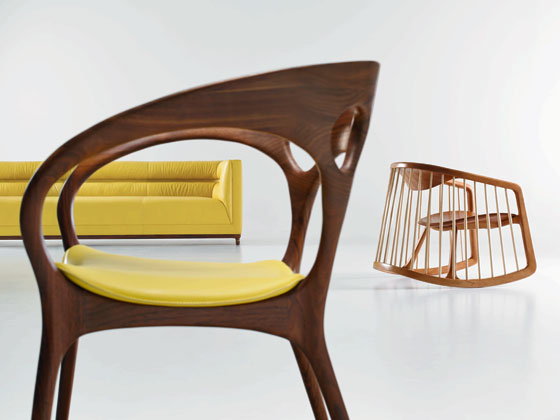
Bernhardt Design, Anne Chair, design: Ross Lovegrove; Harper Chair, design: Noé Duchaufour-Lawrance & Alex sofa, design: Jephson Robb © Bernhardt Design
×Bernhardt Design, Cinema sofa, design: Noé Duchaufour-Lawrance © Bernhardt Design
Bernhardt Design, Anne Chair, design: Ross Lovegrove © Bernhardt Design
Naturally, these companies see their products as improvements to daily life, adaptive to an ever-chaning society but also striving to participate in building a better world. They’re all committed on social and environmental levels in their own organisation, production and communities through several programs intended to prepare a responsible future, especially through education, innovation and the pursuit of true sustainability.

